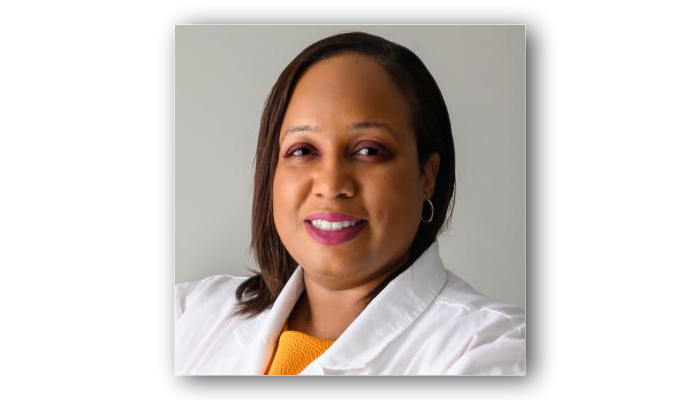How a Shortage in Certified Nurses is Creating Wound Care Deserts
February 18, 2016
Last month, the news shared two important stories that were closely linked. Walmart announced the closing of 102 Walmart Express stores as part of their overall restructuring and statistical analyses revealed the states with the highest levels of obesity. These two stories prompted discussions about food deserts and their tie to obesity.
Food deserts are identified as areas without easy access to healthy food choices. They have been thought to be a contributing factor for obesity and the cascade of comorbidities that are tied to it. The Centers for Disease Control and Prevention (CDC) have funded Prevention Research Centers (PRC) in an attempt to ensure healthy food options in neighborhood markets. The lack of readily available fresh fruits, vegetables and lean protein options is problematic in some communities. The existing research, however, is not clear and more research is needed.
Although eliminating food deserts has been a priority with Michelle Obama and the CDC, research challenges the existence of food deserts. According to a New York Times article in 2012, a number of studies debunked the notion that obesity was tied to either the proximity of good or poor food choices. The research was centered around urban settings. Obesity has been a troublesome problem across the country in spite of a variety of efforts to address it. More research is clearly needed because the factors contributing to obesity are complex. Not only is it important to have access to healthy food options but an individual has to be motivated to choose those options over unhealthy choices. Early and ongoing education about nutrition, healthy lifestyles and exercise are critical.
The debate over food deserts and obesity made me think about how access to care impacts other health concerns. Individuals with wound, ostomy, and continence problems often find themselves trapped in an expansive desert. Research shows that outcomes are best when a nurse has advanced knowledge and skills; and, we know that national board certification is one method of validating an individual's advanced knowledge and skills. In many areas across the country, individuals with these problems have little or no access to a certified nurse.
Where Are the Certified Wound Care Nurses?
The absence of certified nurses is a problem in every setting. Beginning in acute care and spanning the continuum of care, there is a distinct absence of highly-qualified, certified nurses. Some specialties have even fewer certified nurses than others. Some nurses have opted to focus their certification narrowly and others have given up selected certifications that have been earned such as continence and ostomy. Wound care has consistently attracted the greatest interest as a nursing specialty.
Across the country, patients have greater access to wound care services through the countless wound care clinics that are in almost every community. Many of these clinics, however, excellent, do not employ a certified nurse. Most do offer staff education and have protocols to help drive better patient outcomes. Protocols offer general guidance based on research but fail to individualize care which is a key component of evidence-based wound care practice.
Home Health Agencies fill a critical gap in providing care for the patient after discharge but many do not employ a certified nurse. This can be especially problematic for cases with higher complexities. A prime example is with new ostomy patients. Individuals who are referred to home health for support and education following ostomy surgery are typically not receiving care from a certified nurse. If their stoma or personal situation is complicated, the care may not successfully meet their needs. Nurses working in home health want to deliver great care but the reality is that general nursing programs are only able to teach the basics and most nurses graduate with a minimal level of knowledge. Furthermore, to be eligible for home health services, patients need to be "home-bound". This means their only excursions must be limited church and physician visits. Patients working with certified nurses are encouraged to resume normal activities as well as attend a local ostomy support group. None of these activities that are linked to optimal rehabilitation with a new ostomy are options for individuals who are admitted to home health.
A Demand for Certified Wound Clinicians
There is no question that everyone deserves equal access to both good food and good health care. Individuals who receive the best care from the best qualified clinicians normally experience the best recovery. That care can often be delivered at a lower overall cost. The solution, much like that with food deserts and obesity, is complicated. Access is a very real issue. There is a shortage of nurses as well as a shortage of certified nurses. Nurses who may be interested in advanced education and certification have countless options to choose from. We need to put strategies into place to help direct more nurses to wound, ostomy, and continence specialties. A demand needs to be created with both the public and administrators recognizing that special problems deserve special care. Administrators in all settings need to recruit and then retain certified nurses. Although reimbursement is one aspect, money is not the only consideration. Working environments, administrative support, respect, and access to ongoing education through annual conferences are all important.
This is a national issue and is not located to isolated communities. In today's world, where reimbursement is supposedly tied to outcomes, why are certified nurses not able to be reimbursed for the services that they are best prepared to consistently deliver? Everyone deserves the BEST care…let's work to eliminate these deserts or at the very least create an oasis that helps fill the voids.
About the Author
Diana Gallagher has over 30 years of nursing experience with a strong focus in wound, ostomy, continence, and foot care nursing. As one of the early leaders driving certification in foot care nursing, she embraces a holistic nursing model. A comprehensive, head to toe assessment is key in developing an individualized plan of care.
The views and opinions expressed in this blog are solely those of the author, and do not represent the views of WoundSource, HMP Global, its affiliates, or subsidiary companies.











